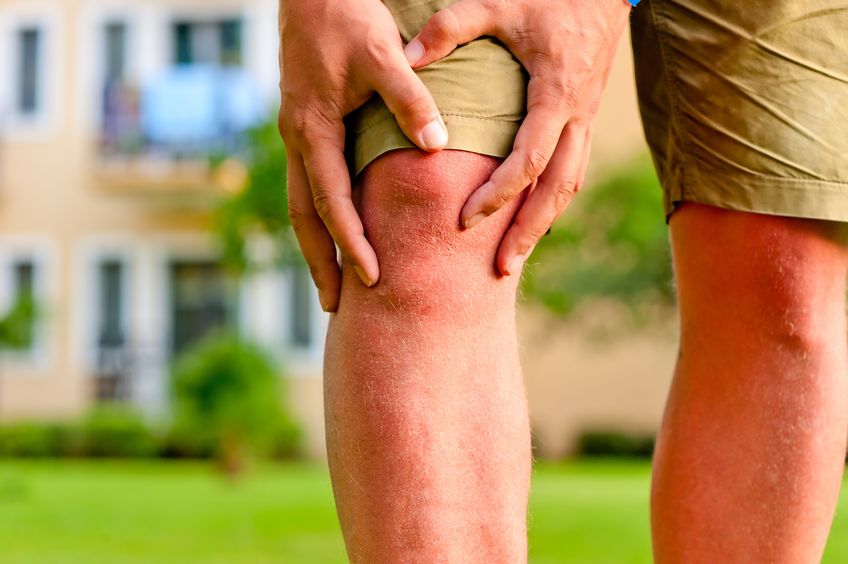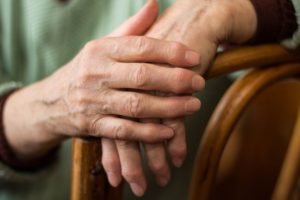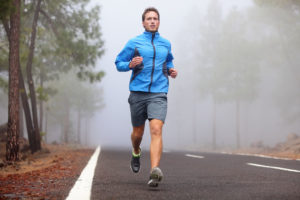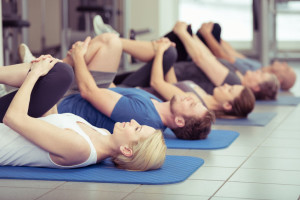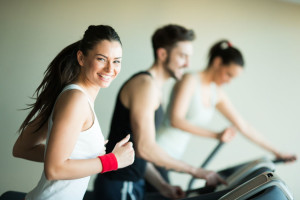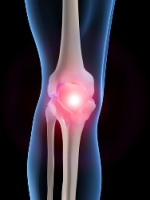A common condition in the United States, joint pain can be a serious hindrance to athletic activity as well as everyday life.
An estimated two million American experience joint pain associated with cartilage injuries each year. Cartilage injuries can be debilitating and only the most modern methods of treatment can restore cartilage, minimize pain and relieve discomfort for patients of all ages.
So what is cartilage?
Cartilage is, essentially, connective tissue found in all animals, including humans. It is more flexible and softer than bone but stiffer and more rigid than muscle. As cartilage does not contain blood vessels or nerves, you cannot “feel” damage in your cartilage, though there are other signs.
There are three types of cartilage found in the human body.
Elastic cartilage is found in your ears and nose. This supports and adds shape to these structures. Fibrocartilage is tough and dense. This type is found in the joint connecting the upper pubic bones where it needs to be sturdy enough to support a lot of weight but flexible enough for childbirth. Fibrocartilage, such as the meniscus, can also be found in joints where the more flexible tissue has been destroyed. The meniscus transfers stress and protects the final type of cartilage, hyaline cartilage, from being damaged. Hyaline cartilage is the cartilage that allows healthy joints to function comfortably. Found in your joints, this type of cartilage can be degraded by arthritis, trauma and other conditions causing medical treatment to be needed.
The Cartilage Restoration Center of New Jersey, staffed by the board-certified and fellowship-trained orthopedic surgeons of AOSMI, utilizes the latest techniques to restore cartilage.
We are completely devoted to the treatment of cartilage injuries with the goal of eliminating pain, restoring function and facilitating your return to full activity.
So you suffer from joint pain and think you may have damaged your cartilage, what are your options? Joint replacement surgery and medication used to be your only option to deal with joint pain. Now with our cutting-edge technology, the board-certified physicians at AOSMI are able to offer you many conservative options, including:
- Anti-inflammatory medications (NSAIDs)
- Steroid injections
- Hyaluronic Acid injections
- Orthobiologics
- Physical Therapy
- Bracing
If conservative treatment options do not work or if the cartilage damage is too severe, there are several surgical options that focus on repairing or re-growing your cartilage, helping reduce the need for joint replacement surgery. Procedures include:
- Microfracture: An arthroscopic procedure that stimulates cartilage regeneration
- Osteochondral Autograft Transplantation – Utilizing bone and cartilage plugs taken from a low load area of the knee and transferred to the damaged area
- Osteochondral Allograft Transplant – Used when donor bone and cartilage plugs are applied in the damaged area
- DeNovo NT – Used when juvenile donor cartilage is used to repair the damaged area
- Autologous Chondrocyte Implantation – Your cartilage cells are harvested via arthroscopic surgery, grown in a laboratory and then transplanted into the damaged area
These surgical options would be performed by our board-certified, fellowship-trained orthopedic surgeons at a hospital or outpatient surgery centers depending upon the procedure.
If you suffer from joint pain or feel you may have damaged your cartilage, call us today to schedule your cartilage consultation – 732-720-2555!
With more than 50 million Americans (one in five adults) suffering from the chronic pain of Arthritis, May has been named National Arthritis Awareness Month. Why all the recognition? Arthritis is the number one cause of disability in our country and affects over 300,000 families. While commonly recognized, little is still understood about the illness and most do not understand the catastrophic effects Arthritis has on those who suffer and those who love them. NJ physical therapy centers report that a large percentage of their patient load is comprised of those looking to ease the physical pain of the illness while maintaining mobility. As we enter into May, let’s stop and take a look at a few facts about Arthritis.
- By 2030, up to 67 million adults are expected to be living with Arthritis.
- Arthritis is not just an illness that affects those in old age. Nearly 300,000 infants, kids, and teens suffer with a form of the disability.
- An average of 172 million workdays are missed every year by those suffering from Arthritis, and these workers are less likely to maintain regular employment than those without the disability.
- On average, the country sees one million hospitalizations a year due to Arthritis-related injuries and conditions.
- $156 billion dollars worth of lost wages are seen every year as a result of the illness.
Now that you understand more about the condition, how can you help?
There are a number of reputable organizations dedicated to helping those with Arthritic conditions. To get involved with the cause, contact the Arthritis Foundation to learn about making donations, volunteering to help with their events and signing up for their e-newsletter. If you are suffering from the pain of Arthritis yourself, call AOSMI today to speak with an orthopedic specialist about how physical therapy and pain management services can help you.
Running a marathon is an incredible undertaking requiring discipline, passion, and lots and lots of preparation. For all the hard work that goes into preparing your body to run a marathon, the sense of accomplishment when you cross the finish line–for the first time or the fiftieth–is unmatched. If you are new to marathon training, take these suggestions to ensure that you train smart and effectively.
- Start Where You Are. It is difficult to train appropriately when you aren’t aware of your current skill level. If you are brand new to running, check with your doctor to make sure you are healthy enough for this sort of exercise and let him or her help you determine an appropriate starting level of intensity. Pushing yourself too hard, too fast can lead to a sports injury.
- Have a Plan and Stick to It. There are plenty of apps and online resources to give runners of all ability levels an effective and appropriate training schedule. This plan will be more than just how much you run and how often. Break your goal of running a marathon into smaller goals you can prepare for, such as running a 5K or half marathon.
- Fuel Properly with Good Nutrition. Even if you are running in part to achieve weight loss, it is important to increase your intake of calories when training to avoid fatigue and muscle loss. Be sure your calorie expenditure (including running) is about the same as your caloric intake. Also, make sure you are eating the optimal amount of protein and other nutrients for your body size, age, and gender.
- Listen to Your Body. Running can take a heavy toll on the bones and joints. If you are experiencing pain, don’t try to tough it out. An unaddressed injury could not only derail your marathon aspirations; it can necessitate surgery, missed work time, and other adverse consequences.
If you have experienced pain while running, an experienced orthopedic specialist at Advanced Orthopedic and Sports Medicine Institute can help determine the exact nature of your issue. Request an appointment with us today to get back to your fitness routine as soon as possible.
Advanced Orthopedics and Sports Medicine Institute is a medical practice located in Freehold and Monroe, NJ, our medical professionals are experts in orthopedic surgery, joint replacement, sports medicine, integrative wellness, spine care, physical therapy, and more.
Walking on the treadmill in the gym, confined to the indoors, can get boring very fast. In order to make exercise a habit, it has to be enjoyable and fun. Hiking is a fantastic way to increase cardiovascular exercise while soaking in the fresh air and sunshine of the outdoors. The uneven surface of an outdoor trail engages more muscle groups than walking on a flat treadmill, making for great strength training and muscle toning as well. Hiking is a fun and exciting way to stay healthy and strong.
Still, for new and veteran hikers alike, there are risks to this form of activity. These risks range from minor inconveniences to life-threatening injuries. Take the following precautions from our New Jersey orthopedic surgeons to keep your hiking safe and enjoyable.
- Gear Up. Proper footwear is essential to safe hiking. While well-fitting, specialized hiking shoes are ideal, other shoes with a thick, deep tread with good traction are also acceptable. Thick socks will help keep your feet comfortable and avoid blisters, as well as keep your feet warm. Dressing in layers is helpful as temperatures can fluctuate throughout your hike.
- Plan Ahead. It is important to know your route ahead of time when hiking and to keep a map and compass with you in the event that you take a wrong turn and find yourself lost. A flashlight can also be helpful. Depending on the length and duration of your hike, you may also consider matches, a first aid kit, and food provisions.
- Check In. Letting someone else know when and where you will be hiking and when you expect to return is advisable, especially because, on some trails, cell service can be limited.
- Stay Hydrated. Like any physical activity, hiking can cause you to sweat, and it is important to drink water continuously throughout your hike to avoid dehydration. As a general rule, it is not safe to drink water found in rivers or streams along the trail. Be sure to keep bottled water with you.
As with any new exercise routine, be sure to consult with your doctor before your start if you are new to hiking. If you are experiencing aches and pains after hiking, an orthopedic specialist can help determine the nature of the problem. Contact Advanced Orthopedic and Sports Medicine Institute today to request an appointment with a NJ physical therapy specialist.
Advanced Orthopedics and Sports Medicine Institute is a medical practice located in Freehold and Monroe, NJ, our medical professionals are experts in orthopedic surgery, joint replacement, sports medicine, integrative wellness, spine care, physical therapy, and more.
Whether you’re recovering from a sports injury or are simply experiencing the annoyances of physical pain from the daily grind of day to day living, there are a few simple movements you can try to help relieve your pain. As contrary as it seems, stretching is your saving grace when it comes to dealing with physical pain. Here we offer a few simple movements to get your muscles and joints moving and relieve common pains. As always, if the pain persists or worsens, call an orthopedic specialist to have it looked at. Stretching will not treat physical injuries or solve underlying conditions.
Simple Movements To Relieve Body Pain:
- Hamstring Floor Stretch: Designed to relieve lower back and leg pain, this hamstring stretch move will loosen the leg muscles and provide relief from cramping, spasms, and generalized aches from overuse. To execute, simple lay on your back with both knees bent. With both hands placed behind the knee, lift one leg at a time for 30 seconds. Lift each leg five or six times and then rest.
- Knee To Chest Stretch: This easy stretch is designed to ease pressure on the glutes and help reduce hip pain. To execute, lay on your back with both knees bent. Place your hands around one knee and pull that leg up to your chin (keeping it bent). Return to the starting position and then move to the other leg. Do four or five lifts on each side for maximum relief.
- Spinal Stretch: Your spine controls nearly all your movements. Stretching the muscles, joints, and ligaments that comprise this lifeline will provide all-over relief from aches and pains. An easy spine stretch involves lying on your back with legs outstretched and your arms spread out. Take your left arm and reach over your body to grab your right knee. Pull that leg over the left side of your body (with the knee bent) and hold for twenty seconds before returning to the starting position. Do the same for the other side. Do the motion between five and six times on each side for maximum effect.
These simple movements should keep you pain-free all summer. Again, if pain persists, is acute, or worsens with stretching, call AOSMI to request an appointment with an orthopedic specialist and have your injury diagnosed and treated.
Advanced Orthopedics and Sports Medicine Institute is a medical practice located in Freehold and Monroe, NJ, our medical professionals are experts in orthopedic surgery, joint replacement, sports medicine, integrative wellness, spine care, physical therapy, and more.
Musculoskeletal health refers to the overall health of the muscles and bones that comprise your body’s systems. Understanding the key elements that go into keeping your musculoskeletal system in working order is key to preventing sports injury, body pain, and illness. Our team of New Jersey orthopedic surgeons has comprised a short list of what you need to know about your body’s musculoskeletal system.
What You Need To Know About Musculoskeletal Health:
- Nixing The Soda Can Save Your Body: Soda, especially regular and diet colas, have been shown to lead to osteoporosis. The reason for this lies in the fact that these popular drinks prevent calcium absorption and lead to lower bone density. Be kind to your bones and drink water rather than soda.
- Stand Up Straight: Your mom was right; your posture is crucial to overall health. Poor posture can lead to strains in the wrists, shoulders, elbows, and back and cause persistent pain and muscle damage.
- Get Moving: Whether you’re interested in weight loss or not, getting up and moving around on a regular basis is crucial to musculoskeletal health. Living a sedentary life has been shown to cause painful and dangerous loss of muscle and bone strength and puts you at risk for a host of injuries.
- Slim Down For Your Health: Maintaining a healthy weight is about more than fitting into the latest summer fashion trends. Being overweight has been shown to affect everything from cardiovascular health to the performance of your bones and muscles. The main reason is that all of this extra weight puts undue pressure on your bones and muscles and leads to deterioration and possible injury. In keeping with our previous tip, get up and get moving to keep your system from having to overwork itself to support the weight of your movement.
- Sleep Well: All too often our society places prestige on working around the clock and missing out on crucial sleep time. This does more than lead to overtired, cranky Americans. It is putting all of our systems at risk for disease, injury, and increased pain. To highlight this point, studies have shown that one night of missed sleep can trigger cellular action that can lead to tissue and muscle deterioration. Imagine what regular lack of sleep is doing to your body!
Now that you know the basics of musculoskeletal health, incorporate these tips into your daily life for improved overall health and a reduction of aches and pains. If the pain persists or your suffer an injury, call AOSMI to request an appointment with a sports injury specialist today.
Advanced Orthopedics and Sports Medicine Institute is a medical practice located in Freehold and Monroe, NJ, our medical professionals are experts in orthopedic surgery, joint replacement, sports medicine, integrative wellness, spine care, physical therapy, and more.
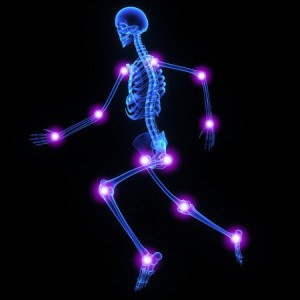 Worldwide, over 1.2 million total joints are being done each year. Approximately, 800,000 of these total joints are done in the US alone. Americans are therefore the biggest consumers of this very successful technology.
Worldwide, over 1.2 million total joints are being done each year. Approximately, 800,000 of these total joints are done in the US alone. Americans are therefore the biggest consumers of this very successful technology.
Traditionally, TJR is done in a hospital set up because most patients undergoing TJR are the elderly with medical comorbidities (the presence of other illness like Hypertension, Heart Disease, uncontrolled Diabetes etc).
The current generation of baby boomers however, are much healthier, live a longer life and tend to stay active at an older age. On the other hand, a lot of younger patients are having TJR because of damage to the joints at an early age caused by sports related injuries.
Improved perioperative anesthesia, development of new analgesics like Exparel, and the increasing sophistication and safety of Surgicenters, prompted the development of outpatient TJR. Approximately, 20 percent of TJR are now done safely, expediently and at a big savings to the insurance company at surgicenters. The recovery time is shortened, infection rate is cut down, certain institutions like the Northern Monmouth Surgicenter in Manalapan NJ, where I do most of my outpatient work is close to zero percent.
There are certain reasons why TJR cannot be done in an outpatient setup. Medicare and certain private insurance companies will not authorize the TJR to be done as outpatient. It is my belief that the insurance companies will eventually see the value of doing outpatient TJR.
Any surgical patient with a severe medical condition obviously should be done in a hospital setup.
Examples of TJRs being performed in a Surgicenter, Total Hip Replacement (THR), Total Knee Replacement (TKR), Total Shoulder Replacement (TSR), Reverse Total Shoulder Replacement ( rTSR), Total Ankle Replacement (TAR) If you have any questions regarding surgery in an outpatient setup, please call for in office consultation.
Manuel T Banzon MD FAAOS
04-20-2015
AOSMI orthopedic surgeons have pioneered a new bloodless surgery protocol for joint replacement and other orthopedic procedures. Advanced Ortho Sports gives patients that they need in a number of areas, including sports medicine, joint replacement, spine care, fracture care, hand and wrist injuries, and urgent care. This new procedure is just another example of top quality care available from the orthopedic specialists.
With the use of tranexamic acid as well as advanced surgical coagulation techniques, blood loss and the need for transfusions have been significantly reduced. Since blood transfusions have many potential side effects and risks, patients are much more comfortable having surgery with the new technique which avoids the need for transfusions in the vast majority of patients.
In addition, patients feel better and more vigorous after surgery since they have more circulating oxygen in their blood and are less prone to anemia. This allows more surgeries to be performed without the need for hospitalization and intensive monitoring, resulting in significant cost savings.
For more information about orthopedic surgery at Advanced Ortho Sports, visit https://advancedorthosports.com/orthopedic-care.
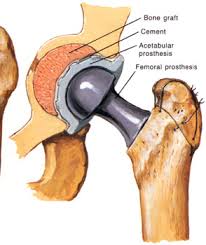 Before signing on for major orthopedic surgery, most people need to have 100 percent confidence in their orthopedic specialist and the capabilities of the New Jersey orthopedic surgeons in charge of the surgery. Without such a confidence, the event can be nearly traumatic. Sure, you can sit down with any one of your orthopedic specialists and discuss their confidence in the procedure. But seeing it for yourself, or hearing it from someone who has actually walked through it, is a far more convincing route to take.
Before signing on for major orthopedic surgery, most people need to have 100 percent confidence in their orthopedic specialist and the capabilities of the New Jersey orthopedic surgeons in charge of the surgery. Without such a confidence, the event can be nearly traumatic. Sure, you can sit down with any one of your orthopedic specialists and discuss their confidence in the procedure. But seeing it for yourself, or hearing it from someone who has actually walked through it, is a far more convincing route to take.
Meet Brian. Dr. Alan Nasar replaced his hip, and he was willing to speak to us a mere two days after surgery. Watch him move! Who would have thought he just had a hip replacement? This should help put those nerves to rest!
http://youtu.be/3s4uTNRRMlw
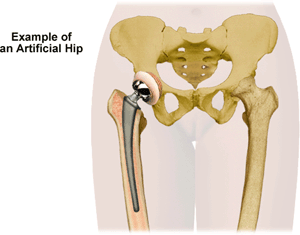 A partial or complete hip replacement is usually the last option offered to patients. A litany of less invasive treatments and solutions are offered by New Jersey orthopedic surgeons before a hip replacement is even considered. That said, there are times when the situation calls for it. Thankfully, technology has advanced considerably and these procedures are not nearly as traumatic or uncomfortable as they once were. Additionally, there are a number of things that you can do to help extend the life of your artificial hip.
A partial or complete hip replacement is usually the last option offered to patients. A litany of less invasive treatments and solutions are offered by New Jersey orthopedic surgeons before a hip replacement is even considered. That said, there are times when the situation calls for it. Thankfully, technology has advanced considerably and these procedures are not nearly as traumatic or uncomfortable as they once were. Additionally, there are a number of things that you can do to help extend the life of your artificial hip.
Extending Your Hip’s Life:
- No High Impact Activities: Avoid high impact activities at all costs! The likelihood of a sports injury (or hip re-injury) increases nearly ten-fold with an artificial hip. This includes activities such as running, jumping and bounding.
- Maintain a Healthy Body Weight: The more weight you are carrying around, the greater the amount of pressure you are putting on your hip. This is problematic even with a healthy natural hipbone. But with an artificial hip, the pressure can simply be too much and will cause significant deterioration over a few years. Keeping your weight down is vital to keeping your artificial hip healthy.
- Work for Strong Legs: The muscles in your legs act as shock absorbers for the hip. Keeping these muscles healthy, strong and flexible allows them to keep your artificial hip protected from wear and tear.
Practice these techniques and your artificial hip should rarely give you problems and your time with an orthopedic specialist should be limited.


